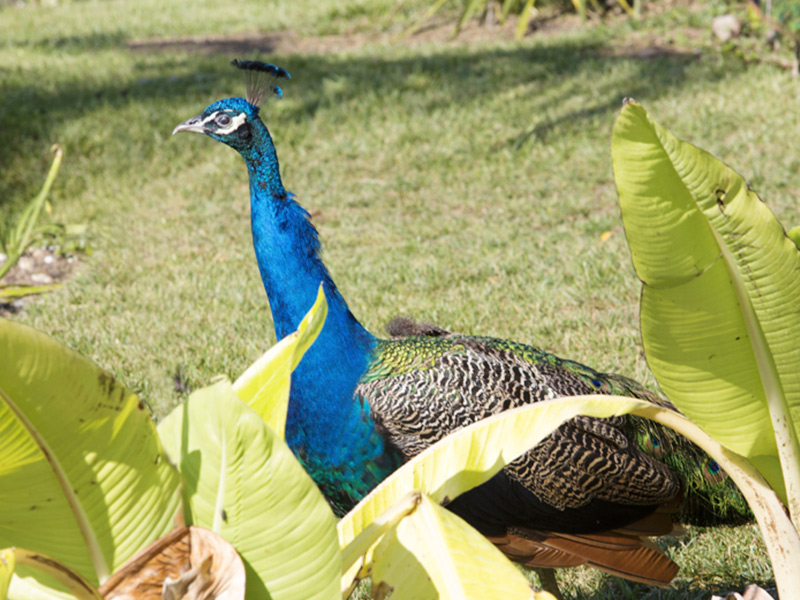When buying an adult ticket. Discover the offer here.

Peacock





The Blue Peacock is a sedentary bird, living most of the year in groups of varying size. These flocks only disperse in early spring, with each adult cock going its own way, followed by two to five females. It lives in a landscape of wooded hills and spends the day on the ground, in the shade of thickets, returning at dusk to the tall trees for the night. A naturally sociable bird, the peacock is often found near human settlements. The peacock's life is very regulated. It frequents the same dormitory and feeds in the same area every day. Similarly, the male peacock parades in an immutable location. Stalked by tigers and panthers, it is the male who acts as an alarm signal for the other animals in the forest. It usually spots the wild beasts first and sounds the alarm.
The breeding season lasts all spring. During courtship, the male is the focal point for the females, raising his rectrices and fanning out his tail feathers. The females respond to this call and, appropriately, adopt the characteristic postures indicating their readiness to mate, lurking on the ground facing the male, wings half-open. At this signal, the peacock quickly closes his magnificent train and mates successively with all the peacocks. Some time later, the female prepares a rudimentary nest on the ground, usually in the shelter of a shrub or plant. In this nest, she lays 4 or 5 eggs, but according to some authors the numbers can be much higher. Incubation lasts 28 to 30 days. The peahen helps the young find their food, and sometimes feeds them herself during their first days.
The peacock has taken advantage of its association with humans and given it a great chance of survival! It is protected in India, of course, where it is the national bird, but also in many other areas because it is sacred and has great religious importance.
This time, the beauty of a bird saved it! The blue peacock was moved from its native land to other parts of the western world, and this probably saved it from extinction.
Gregarious, they spend the night in trees, safe from predators. Although it can fly, it prefers to walk, climb or run rather than take to the air. It acts as a warning signal for forest animals, spotting predators first and sounding the alarm with its famous "leon". It is said to braille or scream. They are often seen close to herds of herbivores.